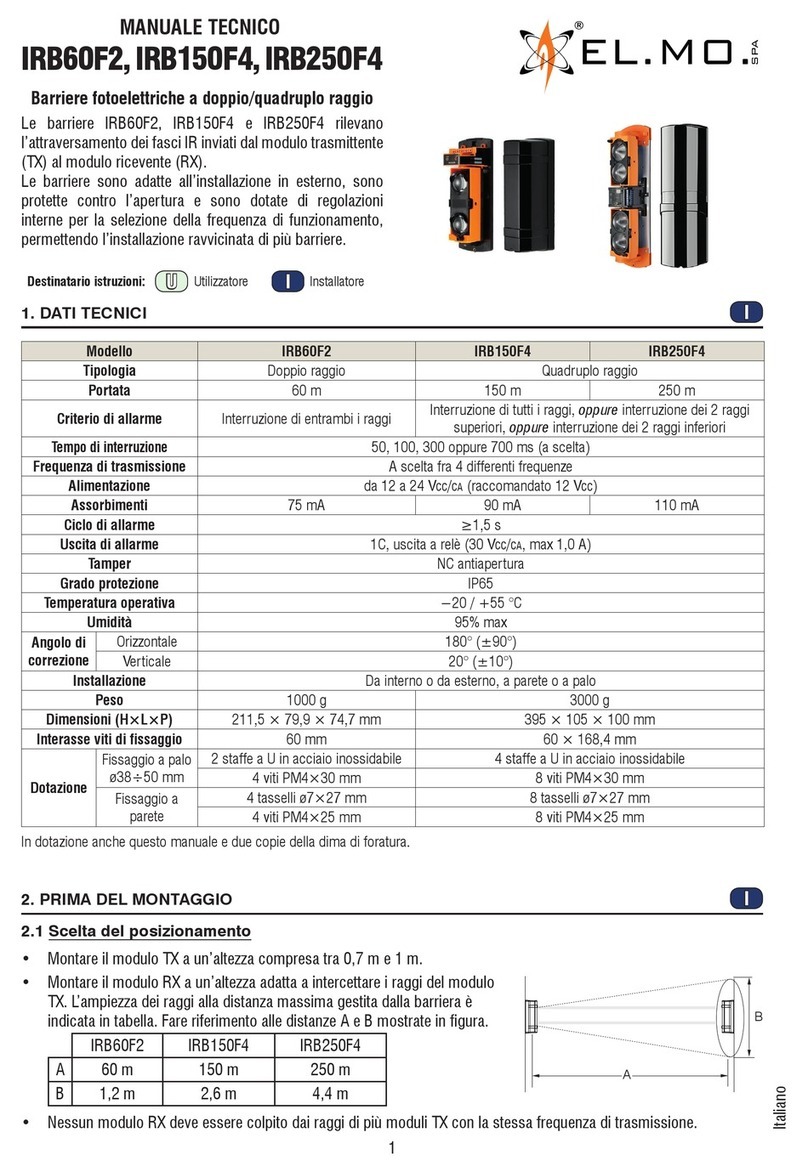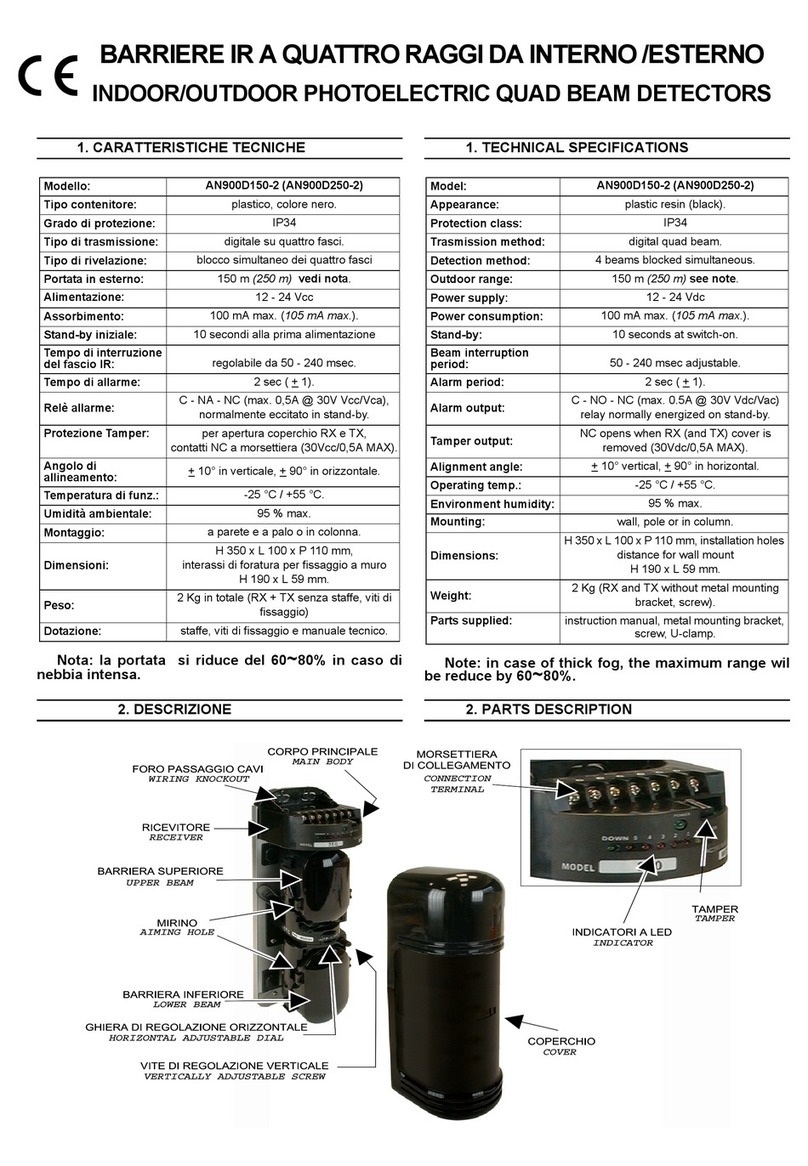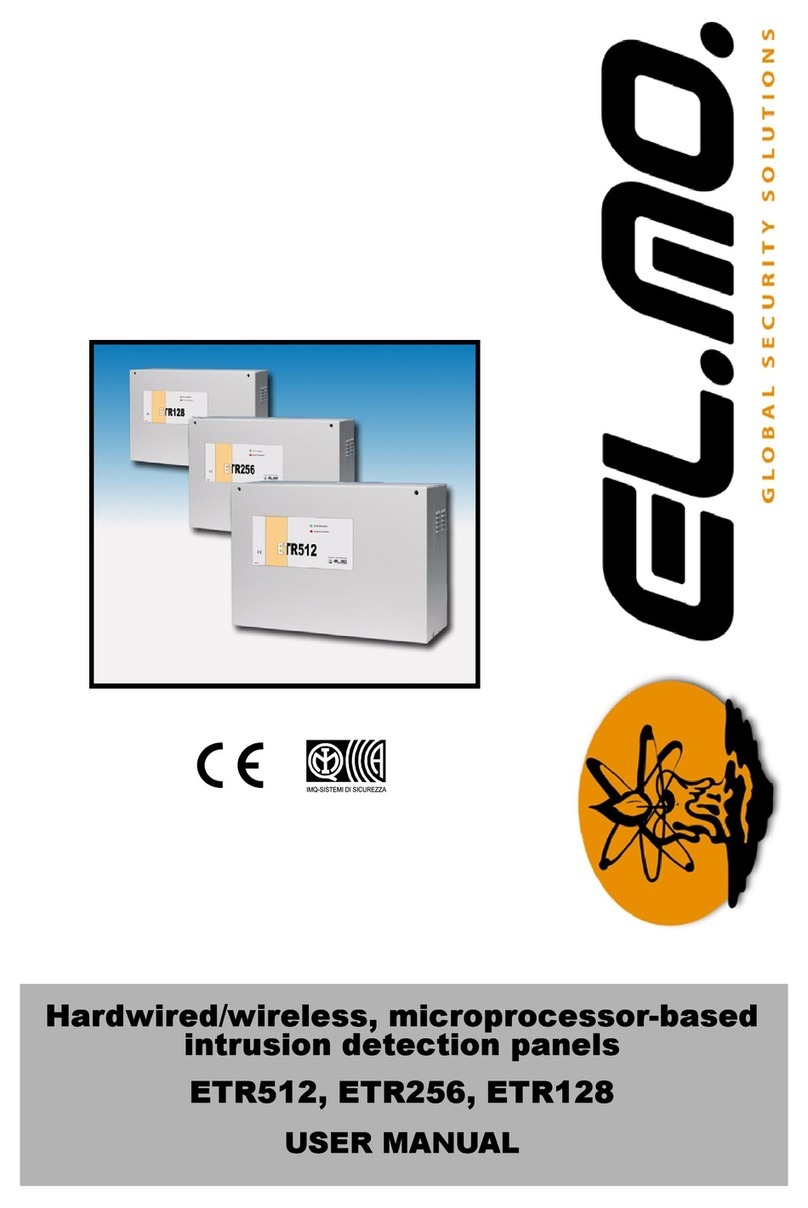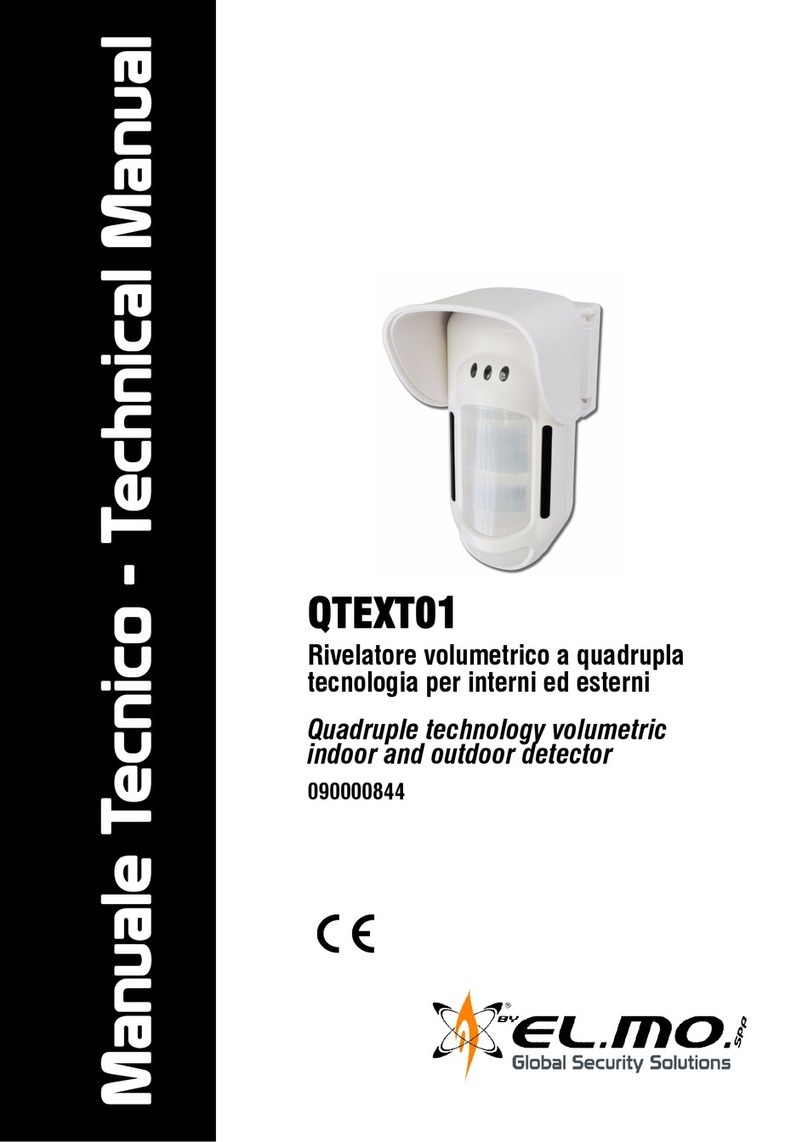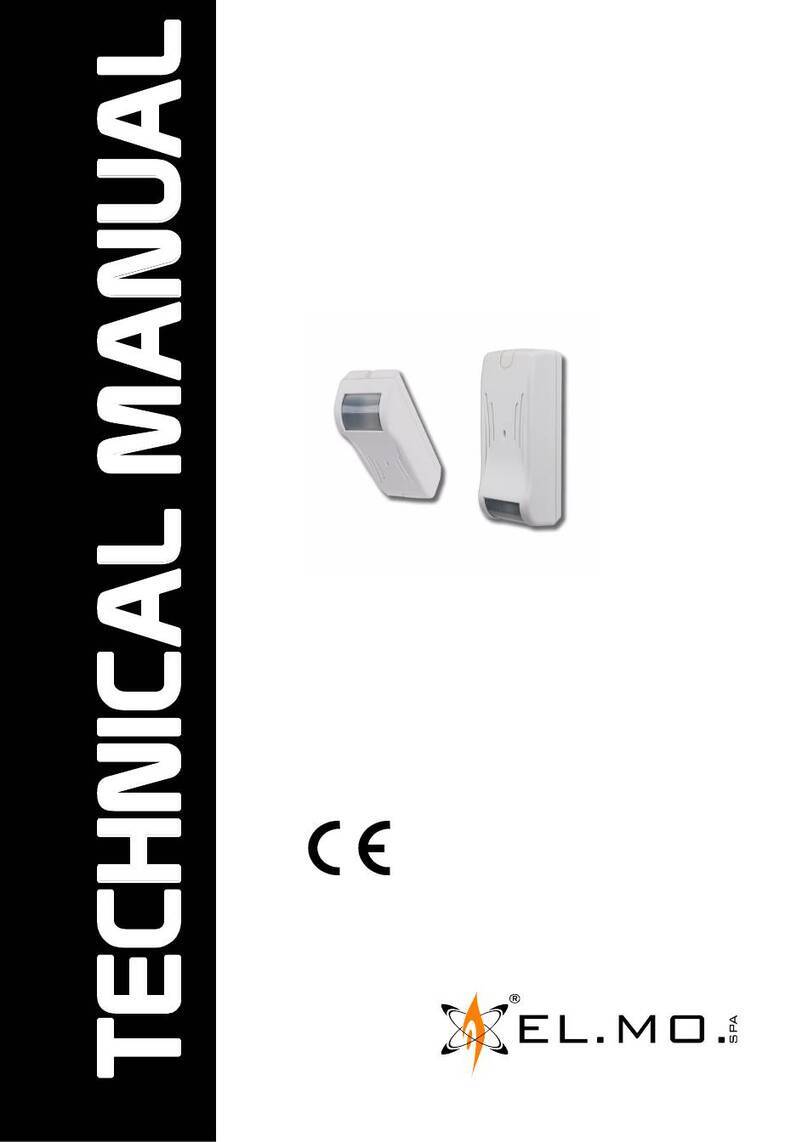
7
6 STARTING THE DEVICE
6.1 DIP switch settings
Detector functions can be set using board DIP switch.
To access it, open the cover as illustrated in the mounting
procedure.
▼ Activate LED / MW section exclusion
DIP 1 Function
ON LED exclusion enabled on ESCL. terminal
OFF MW section exclusion enabled on ESCL. (default)
terminal
▼ Activate/deactivate anti-blind, anti-
mask, and anti-sneak functions.
DIP 2 DIP 3 Functions enabled
OFF OFF None (default)
OFF ON Anti-masking function
ON OFF Anti-masking, anti-blinding
ON ON Anti-masking, anti-blinding, anti-sneak
▼ Sensitivity adjustment
DIP 4 Sensitivity
ON Minimum: 8 MW pulses, 4 IR pulses
OFF Maximum: 4 MW pulses, 2 IR pulses (default)
▼ AND/OR
DIP 5 Mode
ON AND (default)
OFF OR
▼ Activate/deactivate disorientation protection.
DIP 6 Enable disorientation detection
ON Enabled (default)
OFF Disabled
▼ MW range adjustment
DIP 7 DIP 8 Range
ON ON 25%
ON OFF 50% (default)
OFF ON 75%
OFF OFF 100%
6.2 ESCL. terminal settings
The detector features a ESCL. terminal input that can be
used to disable the MW section or the LED indicators.
Disable MW section
– set dip 1 to OFF
– wire ESCL. terminal to +12V
MW section will be disabled regardless of dip 5 position.
Disable LED indicator
– set dip 1 to ON
– wire ESCL. terminal to +12V
7 OPERATING MODE
The detector detects motion inside the covered area.
7.1 AND/OR mode
The way the alarm notification is given diers depending on
operating mode set:
AND mode
To activate it, set dip 5 to ON.
The alarm relay is activated only when both IR and MW tech-
nologies trigger an alarm.
One of the two technologies detects a movement and
switches to pre-alarm status (IR or MW) for the set time.
If within such time the other technology does not confirm
the detection, the technology in pre-alarm status will reset.
OR mode
To deactivate it, set dip 5 to OFF.
The alarm relay is activated when either of the two technol-
ogies sends an alarm notification due to movement within
the controlled area.
7.2 Anti-blinding function
TRES01 features anti-blinding function.
The function detects blinding attempts made by placing a
reflective body before the lens. Use dip switches 2 and 3 to
activate the function.
When the device enters a "blinded" condition, the green
LED will start blinking slowly.
When the reflective body is removed, the standard operat-
ing mode will be restored.
We recommend to disable anti-blinding function if the
detector is installed in places with people passing of-
ten at less than 20cm distance.
7.3 Anti-masking function
TRES01 features anti-masking function.
The function detects attempts to obscure/cover the vision
by placing an object in front of the detector.
In order to activate the anti-masking function, the device
shall be operating in AND mode and the MW mode shall be
enabled.
Use dip switches 2 and 3 to activate the function.
When the device enters a "detector masked" condition, the
blue LED will start blinking slowly.
The standard operating mode will be restored when one of






